Ostriches hide their heads in the ground when they sense danger, fish have a memory of just three seconds, camels resist thirst by storing water in their humps, and sharks die if they stop swimming. Or do they? The world of animals continually surprises us with its wonders, but realities and myths are sometimes confused in such a way that it is difficult to know where the facts end and where the fruit of erroneous speculations, fictional inventions or even purposely fabricated commercial hoaxes begin. In fact, some of the most popular ideas about various animals are false. For example, is it true that…?
…flamingos stand in the water on one leg so they don’t get cold?

Even the signs in zoos often explain that flamingos rest on one leg to conserve heat by having only one limb in the water instead of two. But there is always a child who asks why then do they also do it out of the water? At long last the scientific press has provided us with a fresh and satisfying solution to the puzzle. Two researchers from Georgia Tech (USA) have analysed the biomechanics of the flamingo posture. In their study they discover that it is simply a matter of reducing the effort. Although resting on one leg is exhausting for humans, for flamingos it is the most stable position, and it does not require muscular work. In fact, the scientists verified that it is even possible to place a dead bird in this position. However, they clarify that it is not that the bones fit together, but that the system is more like that of a hammock, due to the peculiar anatomy of the flamingo.
…ostriches hide their heads in the ground when they are frightened?
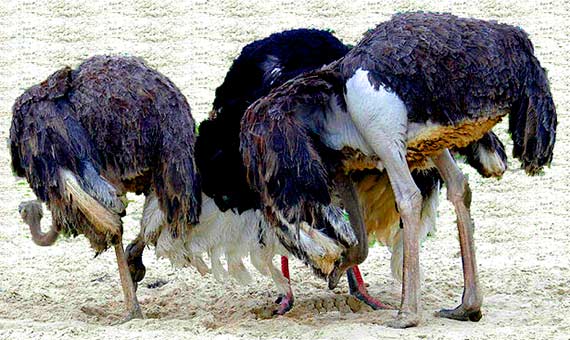
It is probably one of the most widespread myths, but its popularity is logical considering that it has had 1,938 years to spread. It was the Roman naturalist Pliny the Elder who, in his Natural History, first published after the death of its author in the eruption of Mt. Vesuvius in the year 79 AD, wrote about ostriches: “their stupidity is no less remarkable; for although the rest of their body is so large, they imagine, when they have thrust their head and neck into a bush, that the whole of the body is concealed.” Pliny’s misconception was strengthened by watching these birds pecking the ground, which they do for various purposes, such as swallowing sand and pebbles to aid their digestion or turning over the eggs they lay in their terrestrial nests. The fame of the ostrich as a frightened bird is unjustified; like other animals it can flee if it senses danger, but sometimes it also fights with kicks from its powerful legs that are endowed with lethal claws.
…lemmings commit mass suicide?
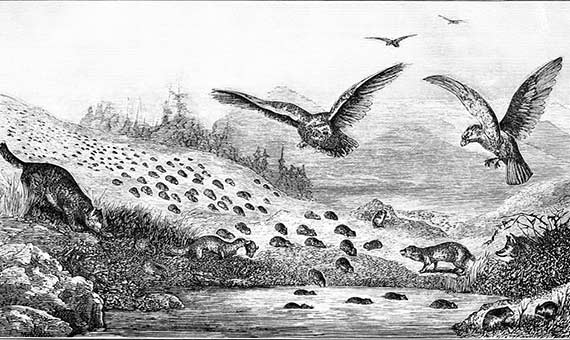
In 1958, a Disney documentary entitled White Wilderness showed a large group of lemmings rushing en masse over a cliff to their death in the ocean. The truth is that the myth about the alleged suicidal behaviour of these small arctic rodents existed before, and even the science fiction writer Arthur C. Clarke had used it as the plot of one of his short stories. However, it was the Disney documentary that contributed greatly to popularizing the idea. It was not until the 1980s that a Canadian television program on animal cruelty in Hollywood discovered that the scene was a montage, and that the lemmings had not jumped voluntarily but were pushed by the film crew. In fact, according to experts, lemmings occasionally migrate when populations grow and food is scarce. During these mass movements they may try to cross watercourses and sometimes die in the attempt. But talking about suicide would make as much sense as stating that the Serengeti wildebeest seek death by launching themselves into the Mara River.
…there are elephant graveyards?

In common parlance, the term “elephant graveyard” is used primarily to designate departments or places where older people in companies or politics are transferred to in order to serve out their time before their final retirement. But do elephant graveyards really exist? At the time of the great explorations, Europeans worshiped the romantic image of mysterious Africa, and it is probable that tales of various skeletons of elephants in a certain area fed the idea that these intelligent and noble animals were coming to a concrete place to die. However, it is not true. According to experts, it is likely that in periods of scarcity and drought elephants will cluster in certain areas, for example the few remaining watering holes, though not to die but to try to survive. The accumulation of skeletons is the result when they do not succeed.
…mice love cheese?
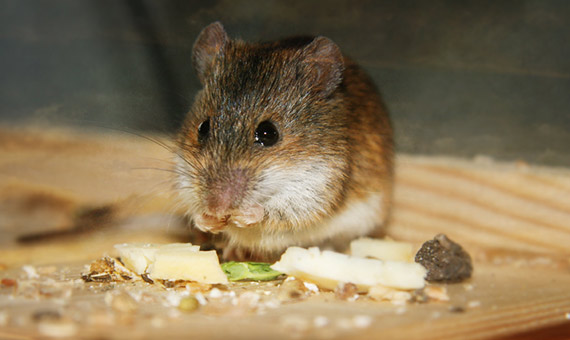
Mice are regular visitors to human homes. Nowadays, we can prevent the damage from their incursions with traps that capture them without causing them harm, allowing us to release them afterwards safe and sound, which should always be done several hundred metres from the house so that they cannot return later. Both the manufacturers and the users of traps often recommend bait such as chocolate or peanut butter; mice love sweet foods, much more than they do cheese. Actually, the connection between mice and cheese is one more example of the associations between animals and their supposed favourite food that are not real, but fictional clichés. Other examples are elephants and peanuts, or rabbits and carrots. The latter case came about because of a joke by the writers of Bugs Bunny who introduced the rabbit chewing on a carrot as a parody of a similar scene starring Clark Gable in the 1934 film It Happened One Night.
…zebras have stripes to camouflage themselves from predators?
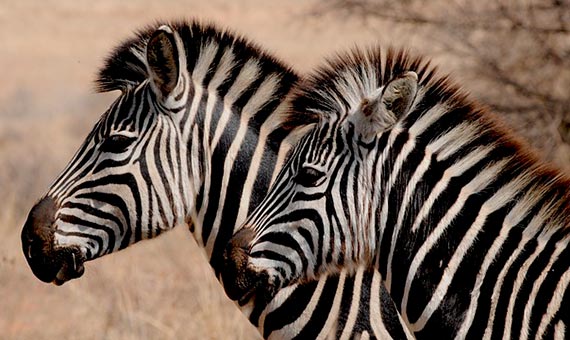
This peculiar aspect of zebras has kept the scientists busy trying to explain the purpose of their characteristic white stripes on a black background. Or are they black stripes on a white background? On this point, science does have an answer—since the embryo has a dark colour and the light areas appear later by deactivation of the melanocytes, it seems more correct to say that the zebra is black with white stripes. But the purpose of this striped suit is still an open debate. The more traditional hypothesis assigned it the role of camouflage. However, in 2016 a study that simulated the vision of predators to digital images of zebras concluded: “it appears highly unlikely that stripes are a form of anti-predator camouflage.” Other experts suggest that the striped suit may be less attractive to biting insects such as horseflies and tsetse flies. Finally, it is possible that the different heating of the black and white areas creates currents of air that help to regulate the body temperature. A 2015 study found that zebras in warmer climates have sharper, darker fringes.
…bulls are infuriated by the colour red?
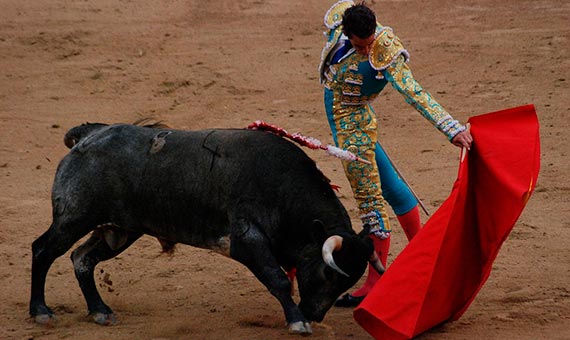
The traditional use of a red cloth to provoke the charge of a bull probably led to the myth that it is a bad idea to cross a cattle enclosure wearing clothes of this colour. However, the effect of the colour red on these animals is only a legend. Bulls do not specifically distinguish this tone from others, since their eyes, like those of most mammals, are dichromatic; in other words, they only have two types of colour receptors, unlike the three types in humans and apes. As a result, their vision is similar to that of colour-blind people. In fact, bulls will charge because of the movement of the bullfighter and the cape, and not its red colour, as demonstrated by an experiment on the Discovery Channel television program MythBusters.
…camels store water in their humps?
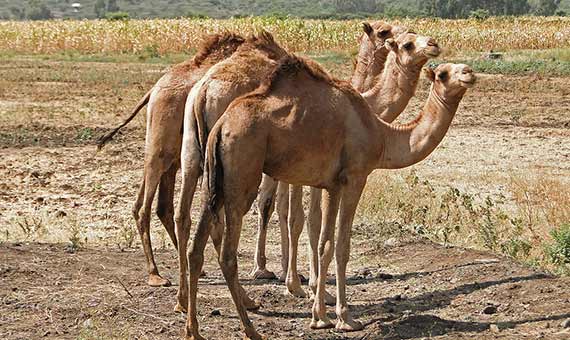
Camels are creatures with an extraordinary resistance, among mammals, to extreme conditions. They can survive drinking water only every 8 or 10 days, but this is not because they have a built-in canteen on their backs—they do not store reserves of water. When they have a chance to drink, they can swallow 200 litres of water at one sitting, but they use it to replenish 30% of their bodyweight that they can lose by dehydration. This ability to lose a lot of water and regain it quickly is facilitated by amazing physiological adaptations, such as oval-shaped red blood cells that flow more easily and resist great osmotic variation. In addition, camels are specialists in retaining water, recycling it within their nostrils, expelling almost completely dry faeces and thick urine. Their humps are deposits of fat, but this is not used to produce water, because the oxygen they would need to inhale would cause them to lose too much water by evaporation through the lungs. Instead, they use the fat as a source of food for energy, which gives them great autonomy in arid regions and in times of scarcity.
…fish have a memory of just three seconds?
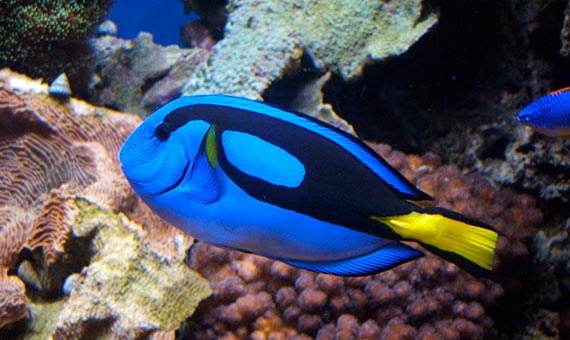
Dory’s endearing character in the Disney Pixar film “Finding Nemo” contributed to the idea of having the memory of a fish, the false notion that fish cannot remember anything new for more than three seconds. In reality, Dory suffered from anterograde amnesia or short-term memory loss, a disorder that exists outside of cartoons and which the character portrayed correctly. But what we call the memory of a fish does not exist. Numerous experiments over several decades have shown that various species of fish are able to demonstrate long-term memory of weeks, months or even years, whether they are hazards to avoid, stimuli they have learned to relate to food, or certain routes to which they learn to orient themselves.
…sharks die if they stop swimming?
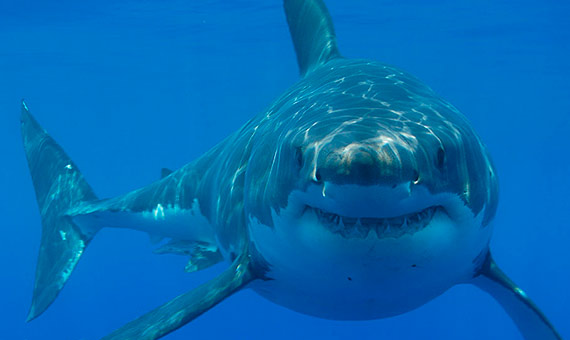
In colloquial language, we use the term sharks for aggressive financiers, who die if they stop swimming in their constant search for prey. It is true that sharks lack a swimming bladder, an organ that other fish use to control their flotation. Therefore, a shark that stops swimming falls to the bottom, but it does not die since its body is able to withstand great pressure; however, it is true that some species of sharks must keep themselves in motion to push oxygenated water towards their gills. Another myth related to sharks is that they never have cancer, something that has been scientifically refuted. The idea was popularized in 1992 by US biochemist William Lane as a commercial claim to sell shark cartilage as a cancer cure, a treatment that is considered fraudulent by scientists and regulatory authorities.
Javier Yanes
Comments on this publication